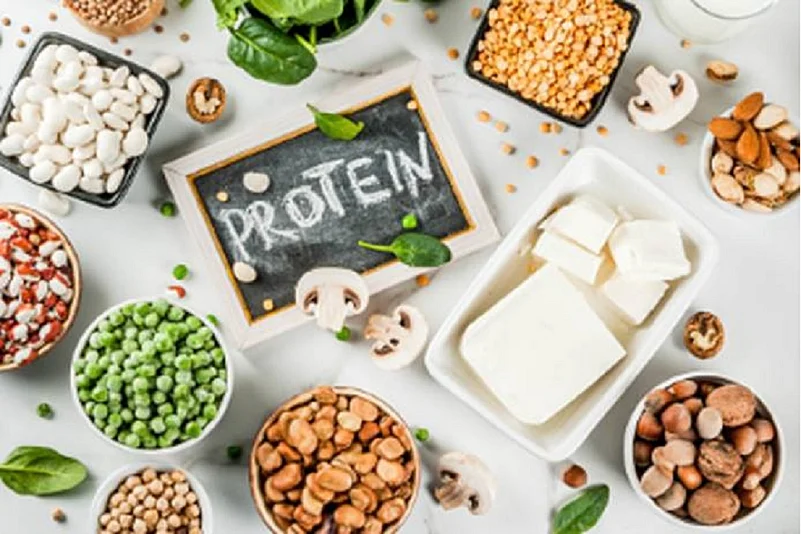As we celebrate another POSHAN Maah throughout September, we need to be aware of the specific nutrient requirements, especially protein. In today’s context, it is key to remember that protein is crucial for growth and development for kids, maintenance of good health for adults, stimulate immunity and convalescence in general.
State of Nutrition
The Global Nutrition Report of 2020 has revealed that globally among children under 5 years of age, 149 million are stunted, 49.5 million are wasted and 40.1 million are overweight. While, in India, 37.9% of children under 5 years are stunted and 20.8% are wasted. This indicates the existence of a dual burden of malnutrition, where both overnutrition and undernutrition coexist.
Advertisement
While the short-term consequences of malnutrition include mortality and morbidity such as pneumonia, diarrhea and fatigue, the long-term malnourished child can have a reduced adult size, intellectual ability, economic productivity, and reproductive performance, and increase the risk of metabolic disorders and cardiovascular disease. The Global Nutrition Report, 2020, also highlights that inequity exists within countries and within populations where there is restricted or poor access or consumption to healthy diets or low-quality proteins.

Missing Element – Protein
An aspect that often goes unnoticed is that if the protein component of a balanced diet is not ensured, India’s growth and development aspirations will be hindered. The recommended dietary allowance, 2020, by the Indian Council of Medical Research-National Institute of Nutrition (ICMR-NIN) has considered a newer protein quality index, digestible indispensable amino acid score, which is based on true ileal digestibility of individual amino acids.
Advertisement
The recommended protein intake for an average Indian man is 54 g/d and for an average Indian woman is 46 g/d, while for children, the recommended daily protein intake is equal for boys and girls up to 9 years of age. As per ICMR 2020 guidelines, children need up to 1.2 g per kg of body weight proteins every day to lead a healthy life. The intake of cereals should be not more than 40% of the total energy, while for pulses, eggs, and flesh foods the total energy percentage can be around 17%, total fat intake is less than or equal to 30%, while milk and milk products intake should be more than or equal to 300ml/day (ICMR-NIN RDA, 2020).
For adults, protein deficiency leads to weakness and delays wound healing and, over a long period can precipitate lifestyle diseases like central adiposity, diabetes, besides malnutrition. While among children protein supports their rapidly growing bodies and brains, the lack of adequate protein puts them at risk of poor brain development, low immunity, and increased infections. Even in the Covid- 19 context, the nutrient most talked about and of utmost importance is protein for its properties to build immunity, fight the disease and support in the post-recovery phase to rebuild muscle loss, immunity, and energy level.
The latest survey by the Indian Market Research Bureau to ascertain the levels of protein deficiency and awareness about protein in India showed 73% of urban rich are protein deficient, with 93% of them unaware about their daily protein requirements. The National Sample Survey 2011-12 also indicated a decline in per capita protein consumption in urban (4%) and rural (11%) areas. Indian diets are predominantly cereal based, where most of the protein derived from cereals has poor digestibility and quality.
Advertisement
Consumption Variables
Social and cultural norms determine food preferences in India and the quantity of foods consumed depends on various factors including resource constraints and food policies. The analysis of consumption patterns in India needs to consider several factors including rising income levels, leading to increases in real per capita expenditure, changes in institutions and organizations, and, in general, a change in preferences. As per Indian Consumer Market 2020, Indians have a high monthly expenditure on cereals, processed foods with only one-third of the food budget being spent on protein-rich foods.
The Path to Requisite Protein
In today’s context, it is key to remember that protein is crucial not only for growth and development but also to fight against diseases and non–communicable diseases. The third wave of the Covid – 19 pandemic is predicted to impact children in a more significant way and hence factors affecting their immunity need more attention. Along with the positive impact on immunity, dietary protein content and quality are significant in the treatment of malnourished children in general. High-quality protein is defined as a protein that supports maximal growth and if the content, quality, or availability is low, it will limit growth and recovery.
Advertisement
It is of utmost importance to learn about diet diversity wherein multiple sources of protein can be considered based on consumption patterns, availability, and access for appropriate diversified good quality protein intake choices.
For this, we must drive awareness about proteins, with emphasis on both aspects, quantity as well as the quality of protein in the Indian context to help combat undernutrition, improve the immune system, and reduce the burden on non-communicable diseases. India needs to encourage the consumption of protein as a part of a daily diet, which is also in line with the Sustainable Development Goal (SDG) 2 - to end hunger, achieve food security and improved nutrition and SDG 3 - the promotion of good health and wellbeing.
Advertisement
(The author is a Professor in the Department of Foods and Nutrition, The Maharaja Sayajirao University of Baroda.)




















